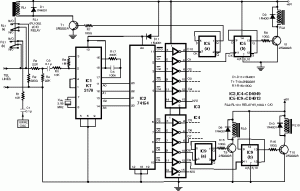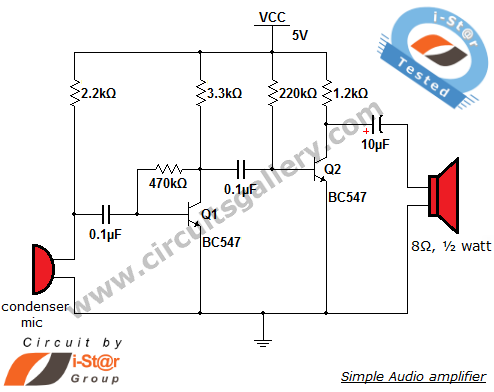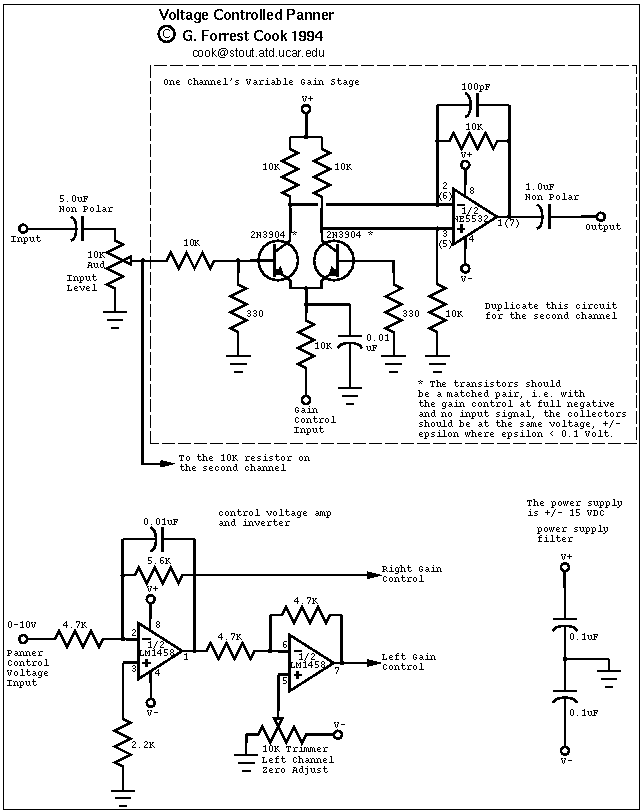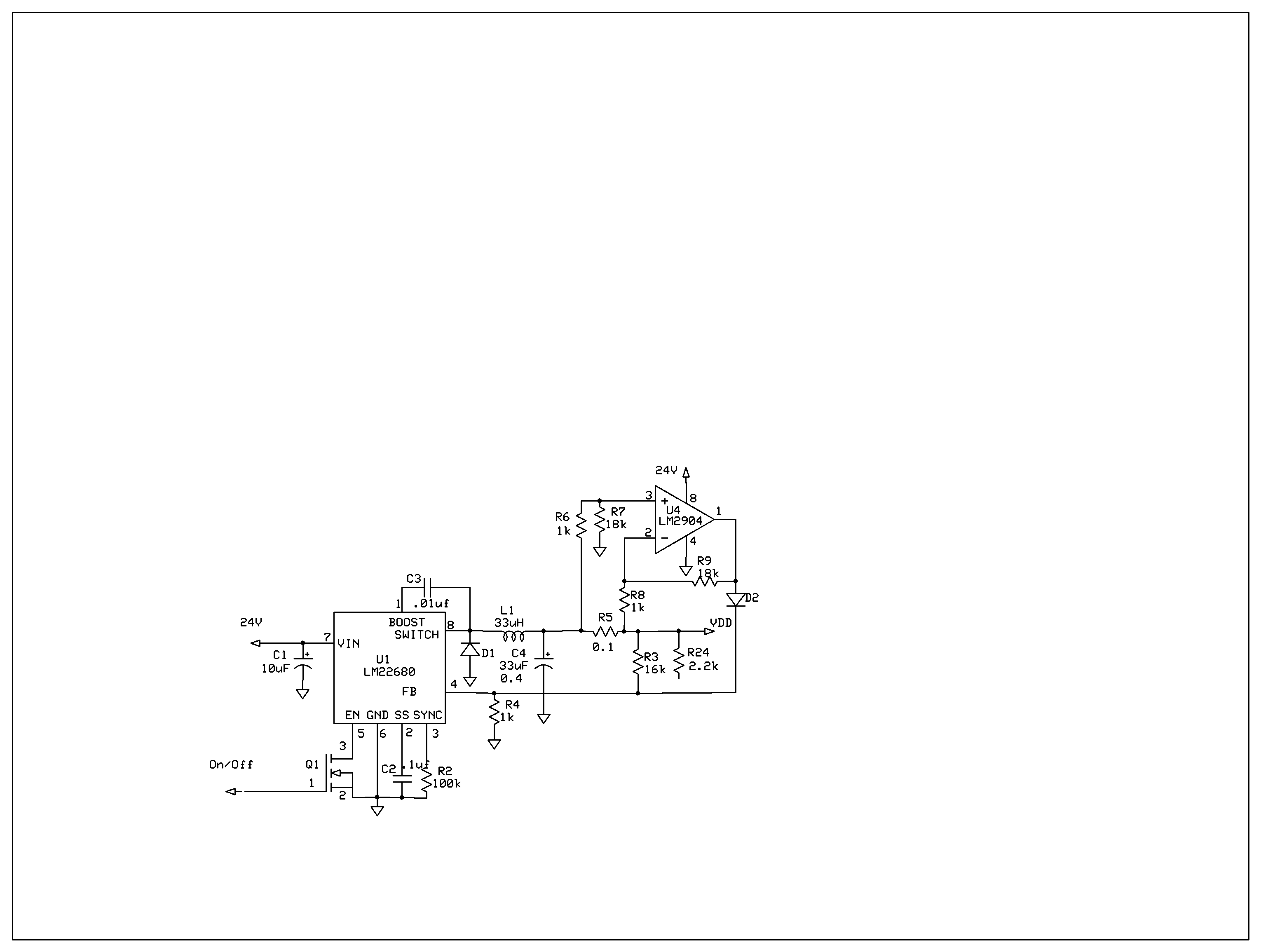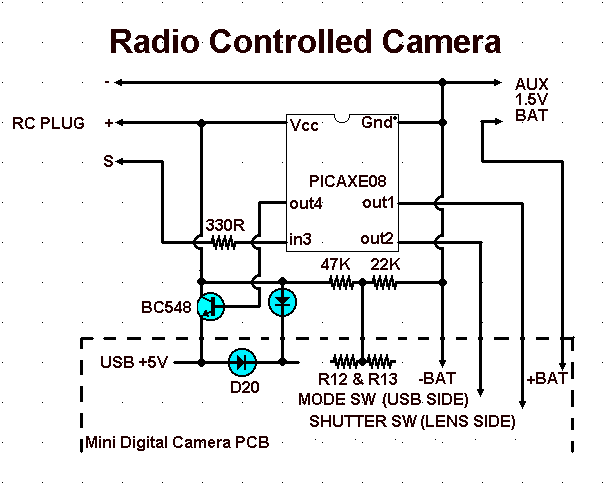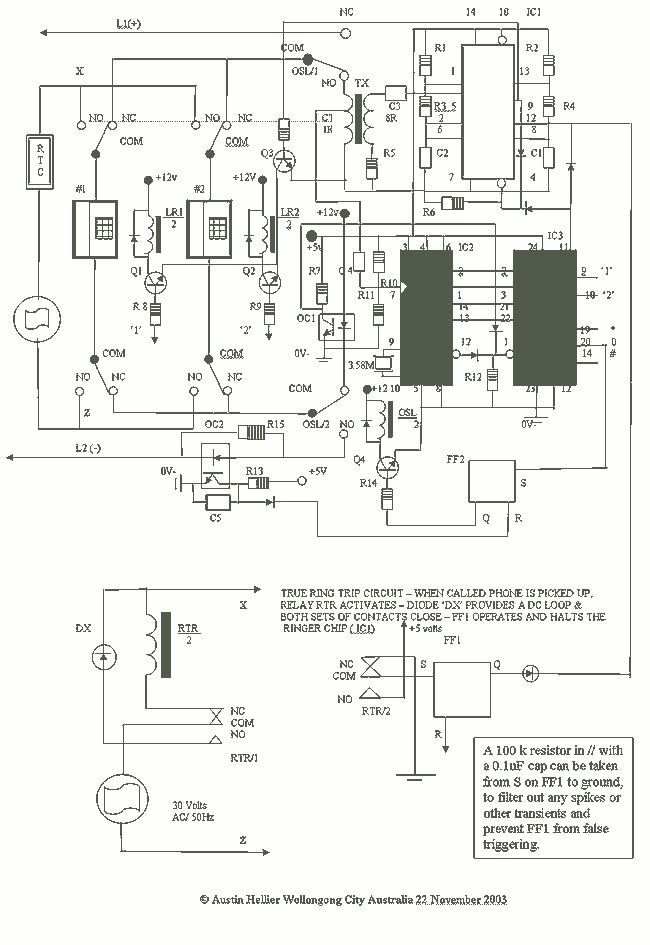
DMX Controlled Theatrical Phone Ringer
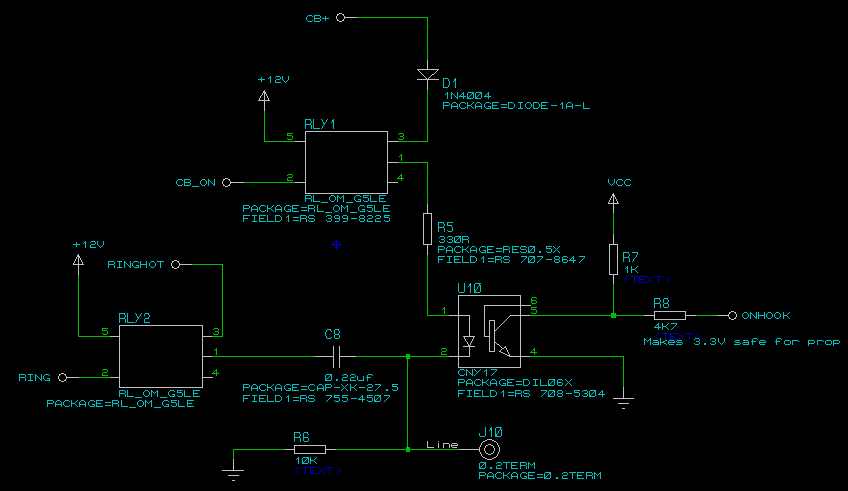
A four-channel DMX512 controlled ringer. The Mk 3 will also incorporate a ringing supply generator, making it reproducible by those without access to the BT ringing supply Number 7. The ringer is microprocessor-controlled, utilizing a Parallax Propeller-based chip, specifically the Spin Stamp, part number SSC1-IC, which is a 24-pin packaged processor with the appropriate amount of I/O for this project. The actual Propeller data sheet and free development software are available from the Parallax website. Unfortunately, Parallax discontinued this specific part as of August 2012. There are many other Propeller chip options available, but the Spin Stamp is highly cost-effective and compact. This ringer does not generate the ringing voltage, as a genuine British ringing generator No. 7 provides the approximate 50VAC at 25Hz. However, adding this functionality to the ringer would not be difficult, and notes on this are provided later. The table below describes the DMX channel range requirements for the ringer; it is assumed these would be coded into a personality for a moving light-capable console or as memories on a conventional desk. "Battery" refers to the line being powered when not ringing. If someone picks up a phone while the battery is on, they will hear themselves speaking as on a normal phone. With the battery off, the phone appears to be dead. The battery remains on while the phone is ringing to detect when the phone is picked up, but for theatrical use, it is generally best that the battery is off to avoid confusing the actor. When a phone is commanded to ring, it will continue until the phone is picked up. Once the handset is replaced, the phone will not ring again until the function changes. To ring the same way again (i.e., ring UK, then later ring UK), a different command must be issued; this is what "No Change" does. DC is used to monitor the on-hook/off-hook status of the phone, and when off-hook, the DC voltage is modulated with speech and tones. A real phone exchange supplies 48VDC to the line, but significant copper wire distance between the supply (the "Central Battery") and the handset may cause the voltage across it to drop to around 8V when off-hook. The ringer employs a simplified supply system compared to a public exchange. Both the DC and AC supplies share a common ground point, represented by the ground symbol in the following diagram. CB+ is a 12V supply equivalent to the Central Battery of a real exchange. This is switched to the line by relay RLY1, with current limited by ballast resistor R5. Diode D1 prevents ringing current from returning to the CB+ supply. RINGHOT is the ringing supply, switched to the line by relay RLY2 and coupled via capacitor C8, rated at 2.2uF and 250V (note: the schematic incorrectly shows 0.22uF). One of the most complex aspects of phone system design is ring trip detection, which identifies when a user picks up a ringing phone. This requires detecting that a DC circuit has been established in the presence of the AC ringing current. Traditionally, this has been accomplished using specially constructed relays, which must detect that the phone is off-hook by sensing the flow of DC current.
The four-channel DMX512 controlled ringer is designed to provide an effective solution for theatrical and entertainment applications where precise control of ringing functions is required. The integration of a microprocessor, specifically the Parallax Propeller chip, allows for flexible programming and control over the ringer's operations. Each DMX channel can be assigned specific functions, enabling complex cueing and sound design capabilities.
The ringer operates by utilizing a combination of AC and DC supplies, with careful consideration given to the interaction between these two power sources. The use of relay RLY1 to switch the DC supply to the line ensures that the phone can be monitored for off-hook status, while relay RLY2 manages the AC ringing supply. The inclusion of a ballast resistor (R5) and a protective diode (D1) enhances the reliability of the circuit by preventing damage from unexpected current flows.
The capacitor C8 plays a crucial role in coupling the AC ringing signal to the line, ensuring that the ringing voltage is delivered effectively to the phone. The design also includes provisions for ring trip detection, allowing the system to accurately identify when the phone is picked up. This is essential for applications where timing and synchronization are critical, such as in live performances or theatrical productions.
Overall, the four-channel DMX512 controlled ringer represents a sophisticated and versatile solution for managing ringing signals in a variety of settings, combining ease of use with advanced functionality.A four channel DMX512 controlled ringer. The Mk 3 will also incoporate a ringing supply generator, and thus be reproducible by others not in posession of the BT ringing supply Number 7. The ringer is microprocessor controlled, using a Parallax Propeller based chip, specifically the Spin Stamp, part number SSC1-IC, which is a 24 pin packaged processor with just the right amount of I/O for this project.
Spin Stamp Data Sheet. The actual Propellor data sheet and free development software is available from the Parallax web site, . Unfortunately, and most annoyingly, Parallax have discontinued the particular part as used in this project as of about August 2012.
Parallax - sometimes, you suck. There are many other Propellor chip options, but the Spin Stamp is highly cost and size effective. This ringer does not actually generate the ringing voltage, as I have a genuine British ringing generator No. 7, which provides the (approx) 50VAC at 25Hz. However, it would not be difficult to add this to the ringer, and some notes on this are given later.
The table below describes the DMX channel rage requirements for the ringer; it is assumed that these would be coded into a personality into a moving light capable consoole, or perhaps as memories on a conventional desk. "Battery" refers to the line being powered when not ringing. If someone picks up a phone while the battery is on, they will hear themselves speaking like on a normal phone.
With battery off the phone appears to be dead. The battery is always on while the phone is ringing to detect when the phone is picked up, but for theatrical use, its generally best that the battery is off, so as not to throw the actor. When a phone is commanded to ring, it will ring until the phone is picked up. Once the handset is replaced, the phone will not ring again until the function changes. SO to ring the same way again (ie ring UK, then later ring UK) one must command something else, this is what No Change does.
DC is used to monitor the on-hook / off-hook status of the phone, and when off-hook, the DC voltage is modulated with speech and tones. A real phone exchange supplies 48VDC to the line, but it is expected that there will be a lot of copper wire between the supply (the "Central battery") and the handset.
Although the open circuit voltage may be 48V, when a phone is off-hook the voltage across it drops to maybe 8V. The ringer uses a simplified supply system compared to a public exchange. Both the DC and AC supplies have a common ground point, shown as the ground symbol on the following diagram.
CB+ is a 12V supply equivalent to he Central Battery of a real exchange. This is switched to the line by relay RLY1, and current limited to the line by the ballast resister R5. D1 prevents ringing current from returning to the CB+ supply. RINGHOT is the ringing supply. It is switched to the line by relay RLY2 and coupled by C8, a 2. 2uF 250V rated cap. (Note: the schematic incorrectly shows 0. 22uF) One of the most awkward part of the design of phone systems is, and has always been, what is called ring trip detection.
This is the point when the user picks up a ringing phone, and the phone system has to detect this event has happened. What is required is to detect that a DC circuit has been made in the presence of the AC ringing current.
Traditionally, this has been done by relays of special construction. This relay has to detect that the phone is off-hook, by detecting the the passing of DC current. It also acts as a choke of several 🔗 External reference
The four-channel DMX512 controlled ringer is designed to provide an effective solution for theatrical and entertainment applications where precise control of ringing functions is required. The integration of a microprocessor, specifically the Parallax Propeller chip, allows for flexible programming and control over the ringer's operations. Each DMX channel can be assigned specific functions, enabling complex cueing and sound design capabilities.
The ringer operates by utilizing a combination of AC and DC supplies, with careful consideration given to the interaction between these two power sources. The use of relay RLY1 to switch the DC supply to the line ensures that the phone can be monitored for off-hook status, while relay RLY2 manages the AC ringing supply. The inclusion of a ballast resistor (R5) and a protective diode (D1) enhances the reliability of the circuit by preventing damage from unexpected current flows.
The capacitor C8 plays a crucial role in coupling the AC ringing signal to the line, ensuring that the ringing voltage is delivered effectively to the phone. The design also includes provisions for ring trip detection, allowing the system to accurately identify when the phone is picked up. This is essential for applications where timing and synchronization are critical, such as in live performances or theatrical productions.
Overall, the four-channel DMX512 controlled ringer represents a sophisticated and versatile solution for managing ringing signals in a variety of settings, combining ease of use with advanced functionality.A four channel DMX512 controlled ringer. The Mk 3 will also incoporate a ringing supply generator, and thus be reproducible by others not in posession of the BT ringing supply Number 7. The ringer is microprocessor controlled, using a Parallax Propeller based chip, specifically the Spin Stamp, part number SSC1-IC, which is a 24 pin packaged processor with just the right amount of I/O for this project.
Spin Stamp Data Sheet. The actual Propellor data sheet and free development software is available from the Parallax web site, . Unfortunately, and most annoyingly, Parallax have discontinued the particular part as used in this project as of about August 2012.
Parallax - sometimes, you suck. There are many other Propellor chip options, but the Spin Stamp is highly cost and size effective. This ringer does not actually generate the ringing voltage, as I have a genuine British ringing generator No. 7, which provides the (approx) 50VAC at 25Hz. However, it would not be difficult to add this to the ringer, and some notes on this are given later.
The table below describes the DMX channel rage requirements for the ringer; it is assumed that these would be coded into a personality into a moving light capable consoole, or perhaps as memories on a conventional desk. "Battery" refers to the line being powered when not ringing. If someone picks up a phone while the battery is on, they will hear themselves speaking like on a normal phone.
With battery off the phone appears to be dead. The battery is always on while the phone is ringing to detect when the phone is picked up, but for theatrical use, its generally best that the battery is off, so as not to throw the actor. When a phone is commanded to ring, it will ring until the phone is picked up. Once the handset is replaced, the phone will not ring again until the function changes. SO to ring the same way again (ie ring UK, then later ring UK) one must command something else, this is what No Change does.
DC is used to monitor the on-hook / off-hook status of the phone, and when off-hook, the DC voltage is modulated with speech and tones. A real phone exchange supplies 48VDC to the line, but it is expected that there will be a lot of copper wire between the supply (the "Central battery") and the handset.
Although the open circuit voltage may be 48V, when a phone is off-hook the voltage across it drops to maybe 8V. The ringer uses a simplified supply system compared to a public exchange. Both the DC and AC supplies have a common ground point, shown as the ground symbol on the following diagram.
CB+ is a 12V supply equivalent to he Central Battery of a real exchange. This is switched to the line by relay RLY1, and current limited to the line by the ballast resister R5. D1 prevents ringing current from returning to the CB+ supply. RINGHOT is the ringing supply. It is switched to the line by relay RLY2 and coupled by C8, a 2. 2uF 250V rated cap. (Note: the schematic incorrectly shows 0. 22uF) One of the most awkward part of the design of phone systems is, and has always been, what is called ring trip detection.
This is the point when the user picks up a ringing phone, and the phone system has to detect this event has happened. What is required is to detect that a DC circuit has been made in the presence of the AC ringing current.
Traditionally, this has been done by relays of special construction. This relay has to detect that the phone is off-hook, by detecting the the passing of DC current. It also acts as a choke of several 🔗 External reference
Warning: include(partials/cookie-banner.php): Failed to open stream: Permission denied in /var/www/html/nextgr/view-circuit.php on line 713
Warning: include(): Failed opening 'partials/cookie-banner.php' for inclusion (include_path='.:/usr/share/php') in /var/www/html/nextgr/view-circuit.php on line 713
